Bathroom renovation ideas for every type of home and budget
Searching for bathroom renovation ideas for your project? We've put together a collection of inspirational spaces for you, with something for everyone — plus tips on keeping costs down
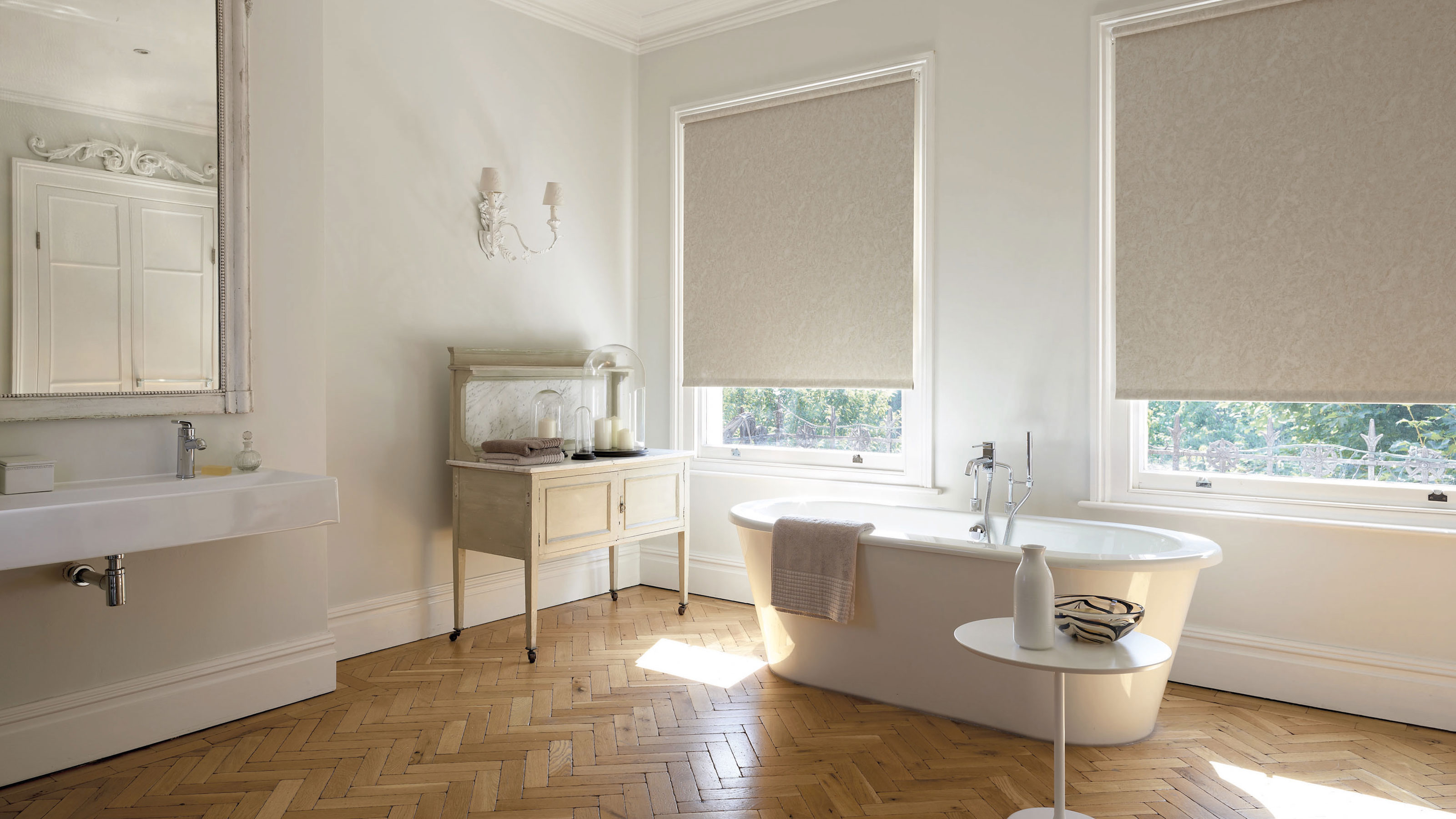
If it is bathroom renovation ideas that you are short on then get ready for a serious injection of inspiration — we have something for every style of home and budget.
When renovating a bathroom, there are some extra considerations to take into account, such as how to dispose of the fittings and fixtures you are ripping out, the condition of the floor and walls and the position of any existing plumbing, electrics, windows and doors.
Of course a bathroom renovation also has many benefits compared to starting the room from scratch — all the plumbing is likely to have been installed to some degree, plus you may have some beautiful original features you can incorporate into the design and you may even be able to re-use fittings.
Here, we take a look at all kinds of bathroom renovations, from those that have taken a contemporary route to designs that have very much worked with the character of the building.
Bathroom renovation ideas on a budget
There are plenty of ways to renovate a bathroom on a budget — you really don't have to spend a fortune to upgrade your space.
"Keeping the bathroom layout the same will minimise the amount of work involved and therefore the cost of doing it," says Homebuilding & Renovating magazine's Deputy Editor Michelle Guy. "If you’re happy with the current configuration and will keep the plumbing in place, then the design is a lot more straightforward. You’ll already have your layout partly done."
Other ways to keep a lid on costs include:
- Taking hidden costs into account: Don't forget to budget for new studwork, floor reinforcement, skimming or plastering, lighting and skip hire
- Shopping around and taking advantage of offers or ex-display suites
- Planning in advance: Make sure your electrician and plumber know what type of fittings you want so they can get services in place
- Tackle some work on a DIY basis: Tiling and decorating your bathroom yourself will save you a considerable amount of money
1. Think beyond wall tiles
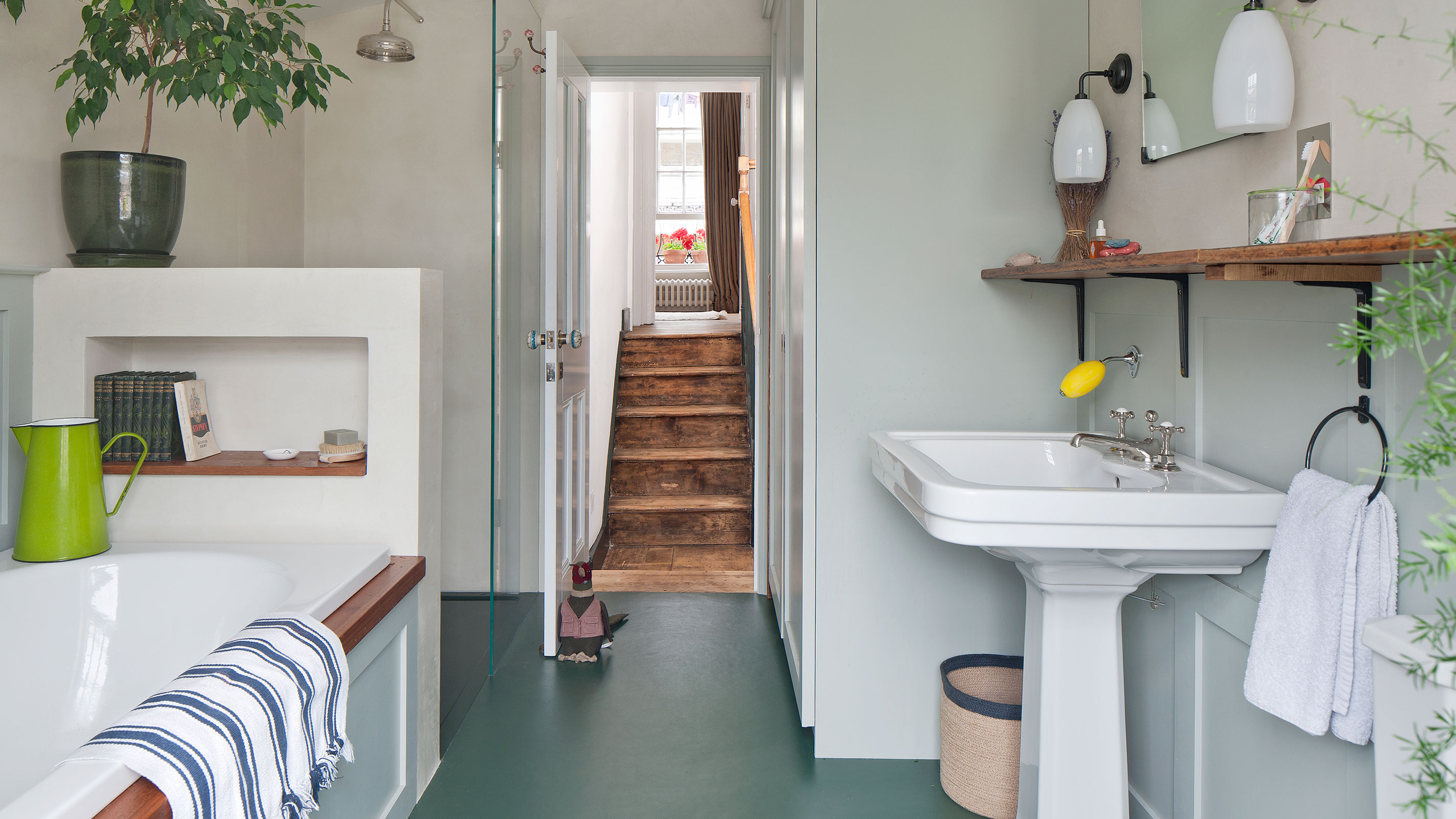
If you were, up until now, only considering bathroom tile ideas for your bathroom renovation project, then it may well be time to take a look at the other options on offer.
The owners of this renovation project were keen to hold onto all the period charm their home offered. They have used a combination of traditional panelling (also used elsewhere in the house), along with an unusual dark green vinyl for the floor and Tadelakt (a type of Moroccan polished plaster) on the walls, including in the shower which is located just next to the door.
2. Allow architectural features to shine
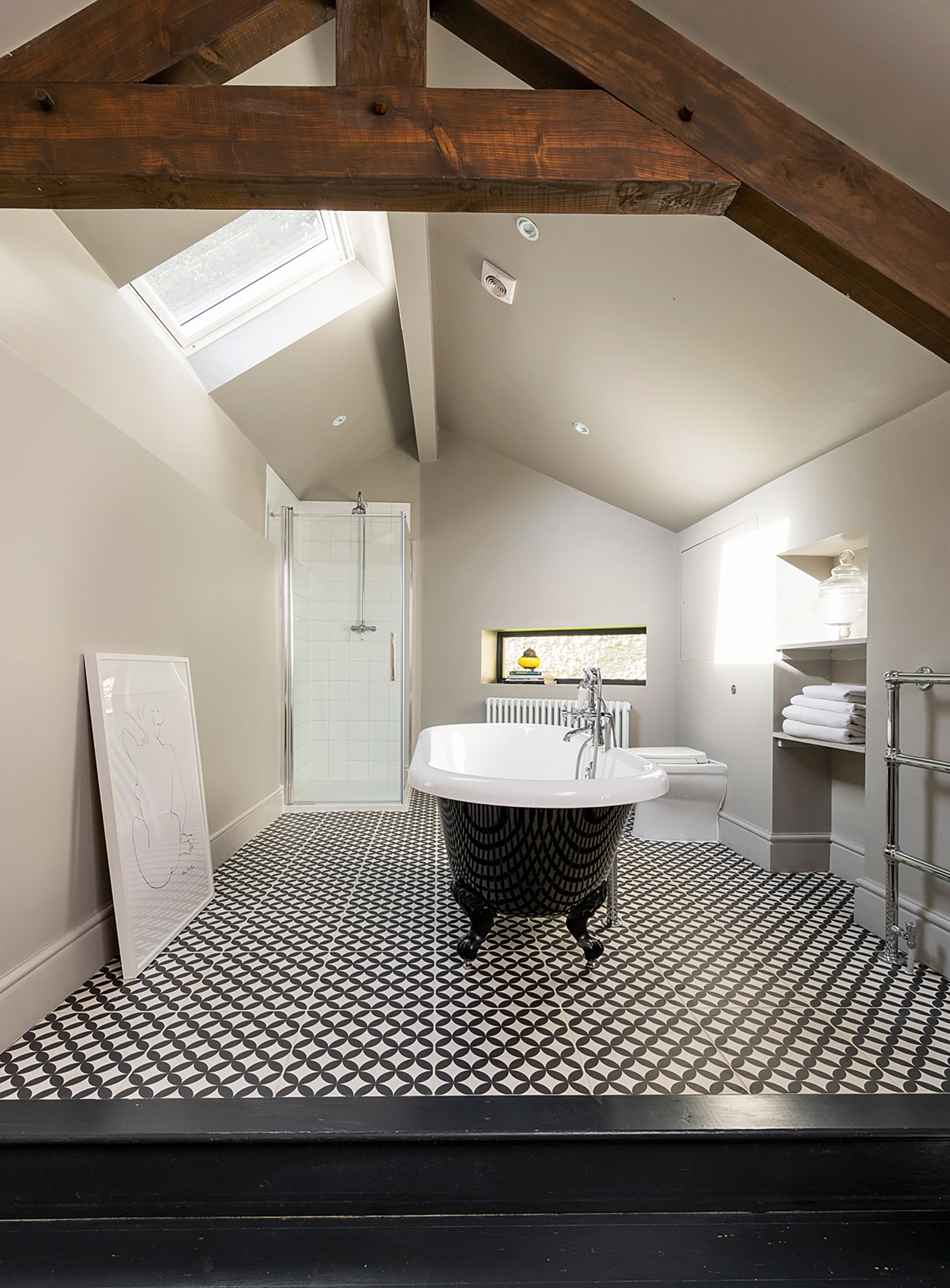
When working with an old building most people's home renovation ideas involve retaining and highlighting original features as much as possible — and the bathroom need not be any different. Whether it is old beams, original floor tiles or a beautiful period fireplace, be sure to work these kinds of finds into your bathroom design.
Here, the owners of this restored 1840s farmworker's cottage have kept things simple in order to allow the interesting shapes and the old beams in the room to stand out. A simple freestanding rolltop bath takes a central position, while simple sanitaryware was chosen to fit in without fighting for attention.
3. Take an industrial approach for instant character
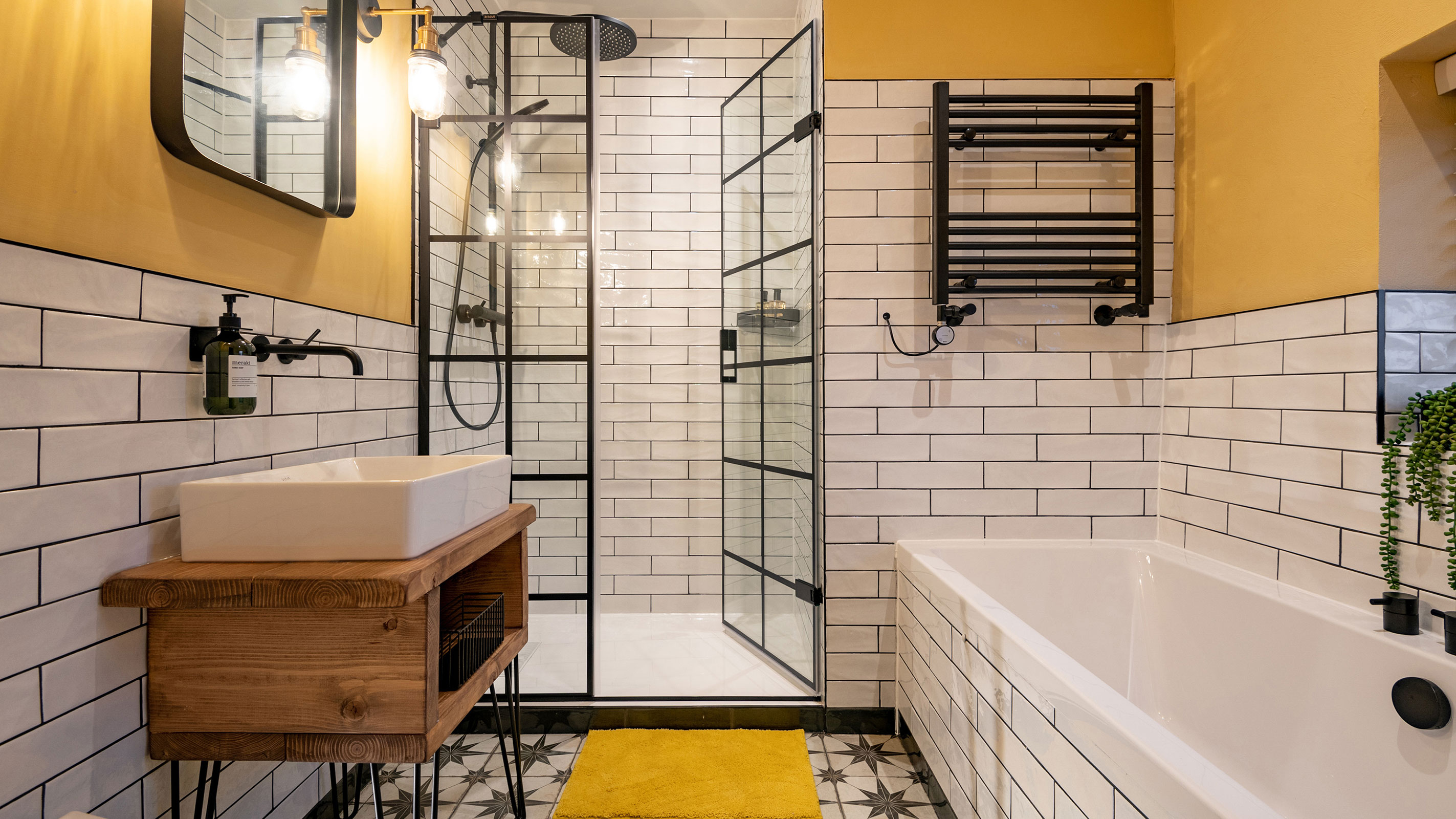
Industrial style fixtures and fittings seem to have a natural affinity with many period homes, working really well with quirky room shapes, alcoves and sloping ceilings.
Here, every inch of space has been maximised. The potentially awkward alcove that lies to one end of the room has been transformed into a spacious shower enclosure, finished off with stylish black metal doors.
Black brassware, metro style tiles with dark-coloured grout, decorative floor tiles and warm yellow walls complete the look — and really draw attention to the pleasingly irregular shape of the room.
4. Give old floorboards a new lease of life
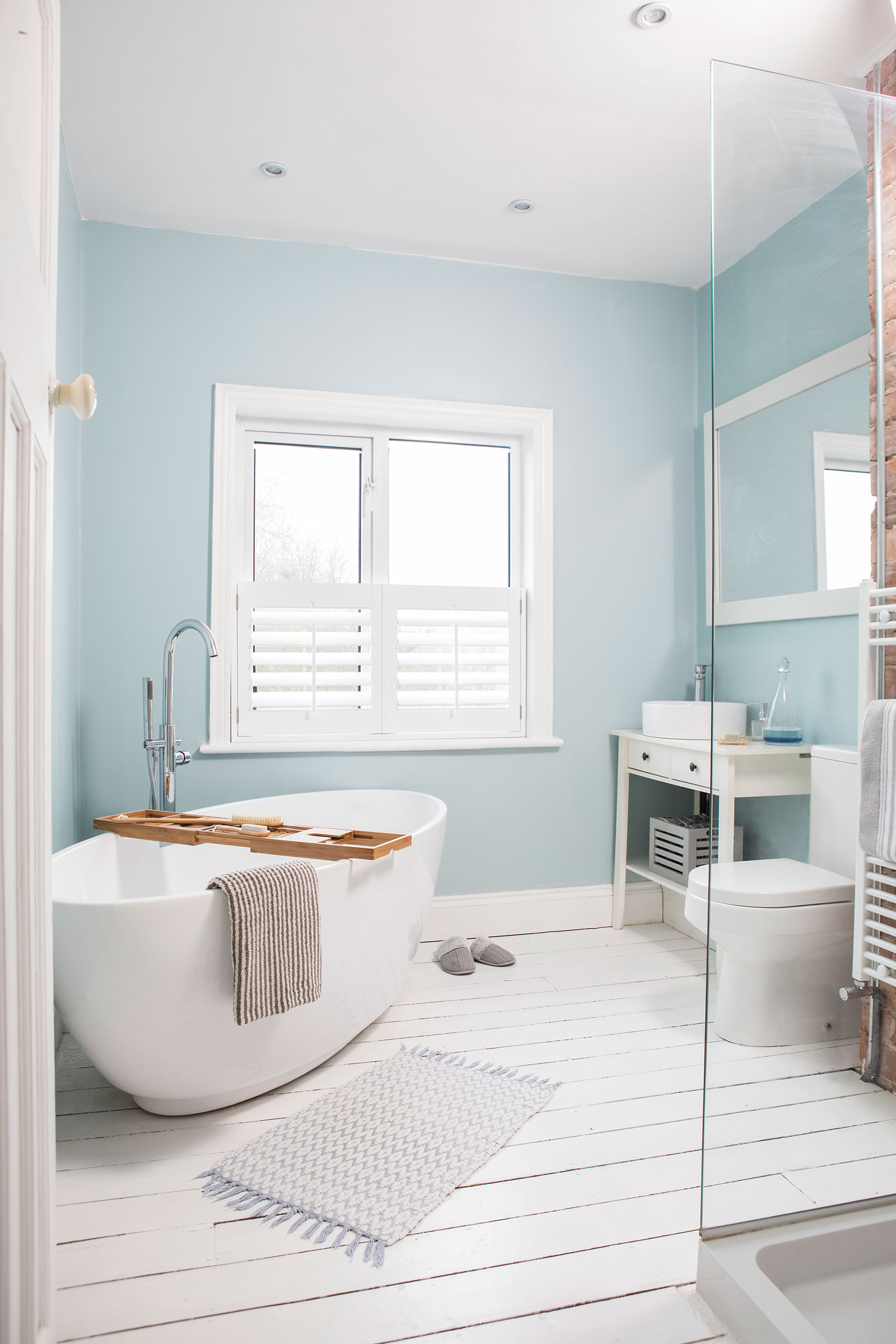
When it comes to bathroom flooring, freshly painted floorboards will give a space an instantly fresh and breezy look. Be sure to choose a durable floor paint and mop up any larger splashes of water quickly rather than letting them sit.
The owner of this neglected terrace was delighted when she ripped up the old carpets to reveal lovely old floorboards, which she repaired and painted. In order to transform the room into the restful sanctuary it now is, an old water tank was removed to make space for the new shower, while the old bath has been replaced with a freestanding oval design.
5. Use reclaimed materials for a rustic look
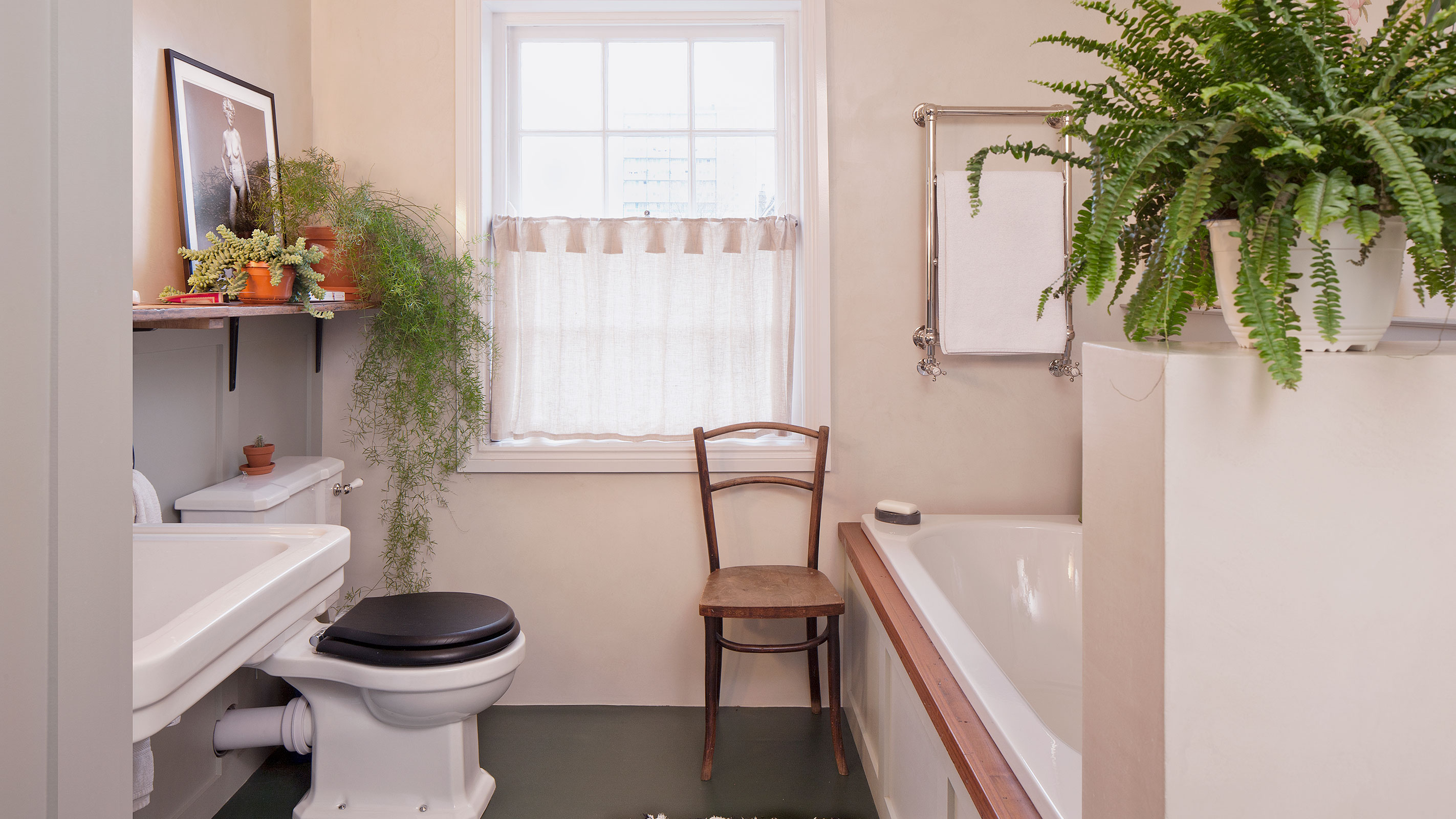
Using reclaimed materials can not only save money and be an eco-friendly option, but they also often suit the original character of older buildings. Remember, some of the most striking schemes are created by repurposing old materials — they don't have to be used as they were originally intended.
The owners of this bathroom, located in a Georgian terrace home, were keen to retain the character and charm of the original building. They used teak flooring salvaged from a hospital in East London as a surround for the bath, along with very traditional sanitaryware — both of which sit beautifully alongside the sash windows.
6. Mix and match old and new
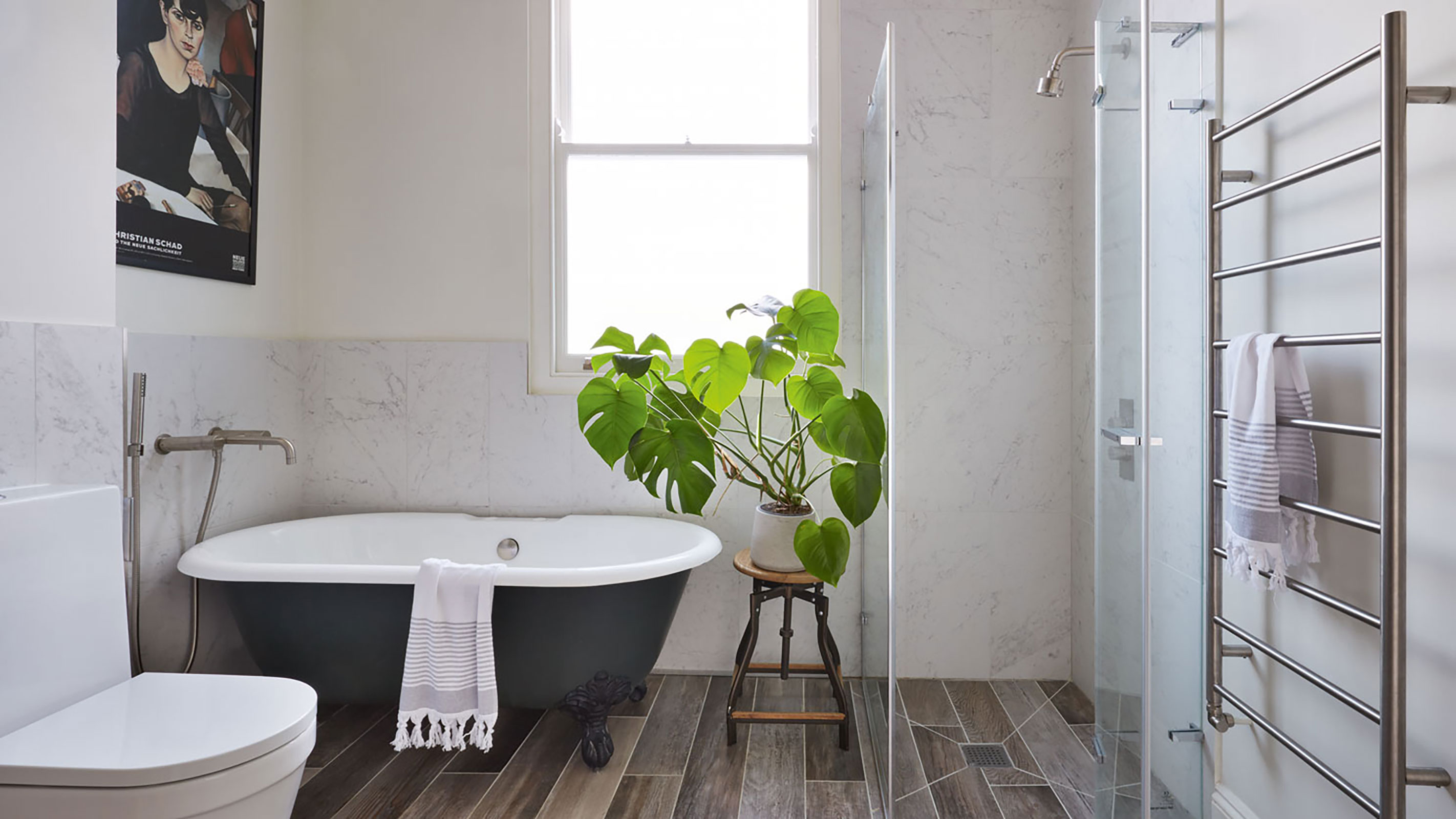
For an eclectic look, combine traditional-style fixtures and sanitaryware with more contemporary elements. Using some sleek, modern finishes will also help to highlight original features you are particularly fond of — some of the best bathroom radiators come in very modern and eye-catching designs.
Here, the pretty Victorian sash window stands out against the luxurious marble wall tiles, while the classic rolltop looks fantastic combined with more up-to-date wall-mounted taps and hand-held shower. The sleek and subtle toilet and shower enclosure are all but invisible in order to give the space uncluttered appeal.
7. Be clever with sloping ceilings
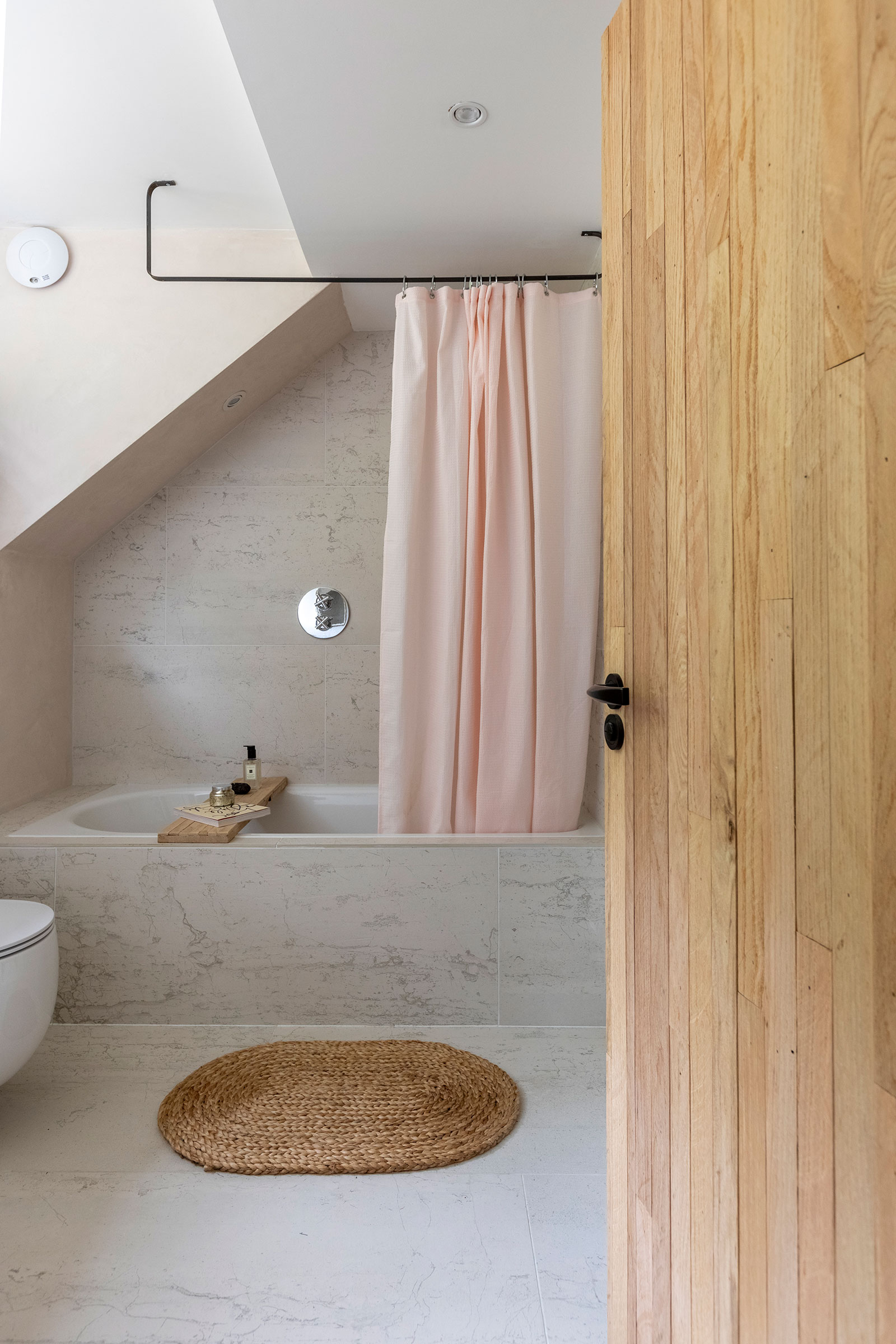
Renovating a house often requires homeowners to think outside the box a little — however, it is often the challenges presented by period properties that results in some of the most beautiful design features.
In the renovation and conversion of this old school house, the bath has been fitted into the space beneath the sloping ceiling, with the shower located to the side of the room blessed with more headroom.
8. Embrace the warmth offered by exposed brick
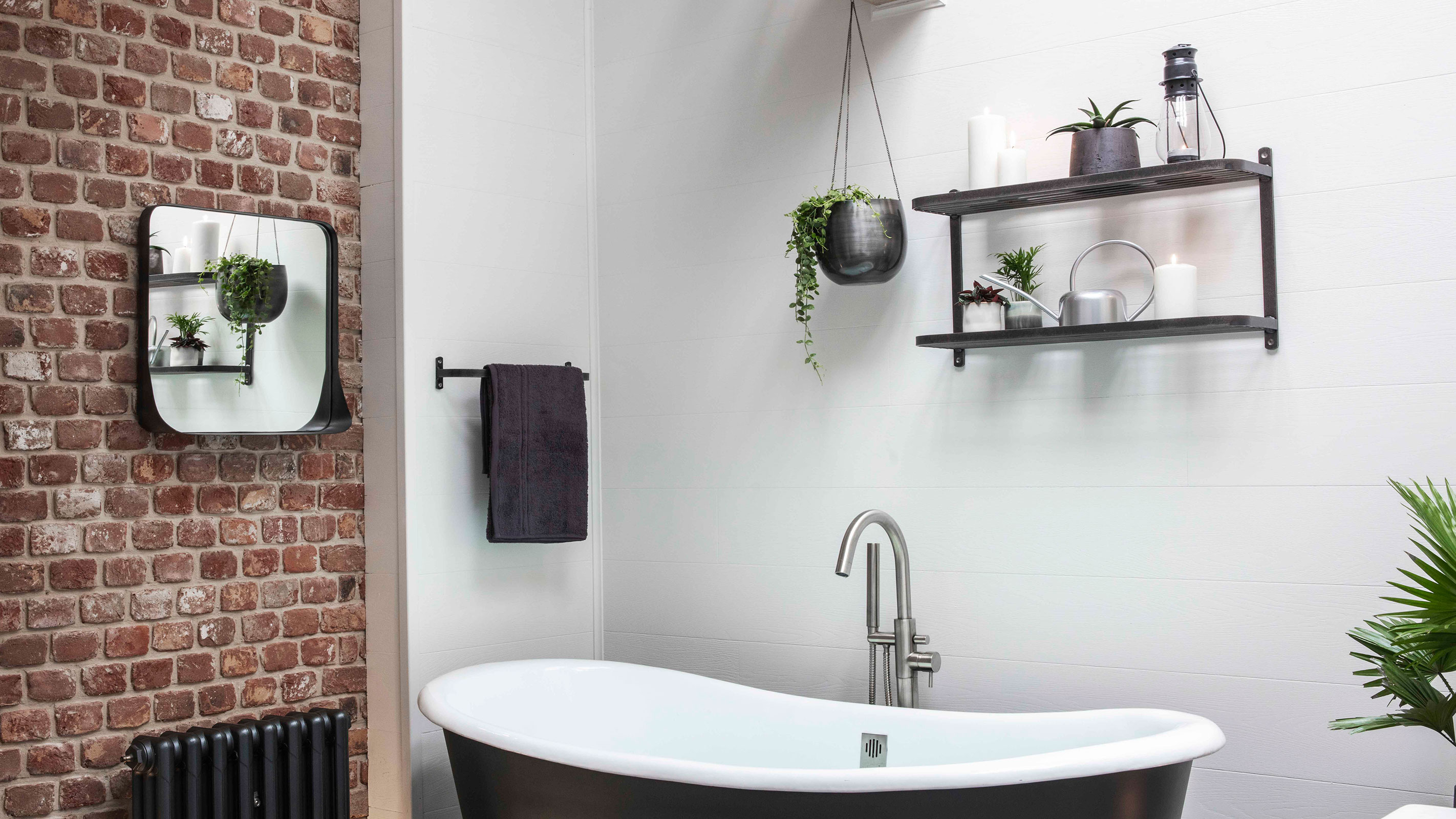
When stripping back a room, stop and consider whether areas of it could be left exposed — this is a great way to draw out the built-in charm of an older house and the rich reds and browns of old bricks can visually warm up a space no end. If you are worried about bathroom renovation costs, you will be relieved to hear that this idea could also save you money.
In a bathroom, you will need to ensure the brick wall is clean and free of debris, before filling any large gaps with mortar. Use a brick sealant or paint exposed bricks instead using a primer and a two coats of water-based acrylic paint.
9. Highlight soaring or irregular ceilings
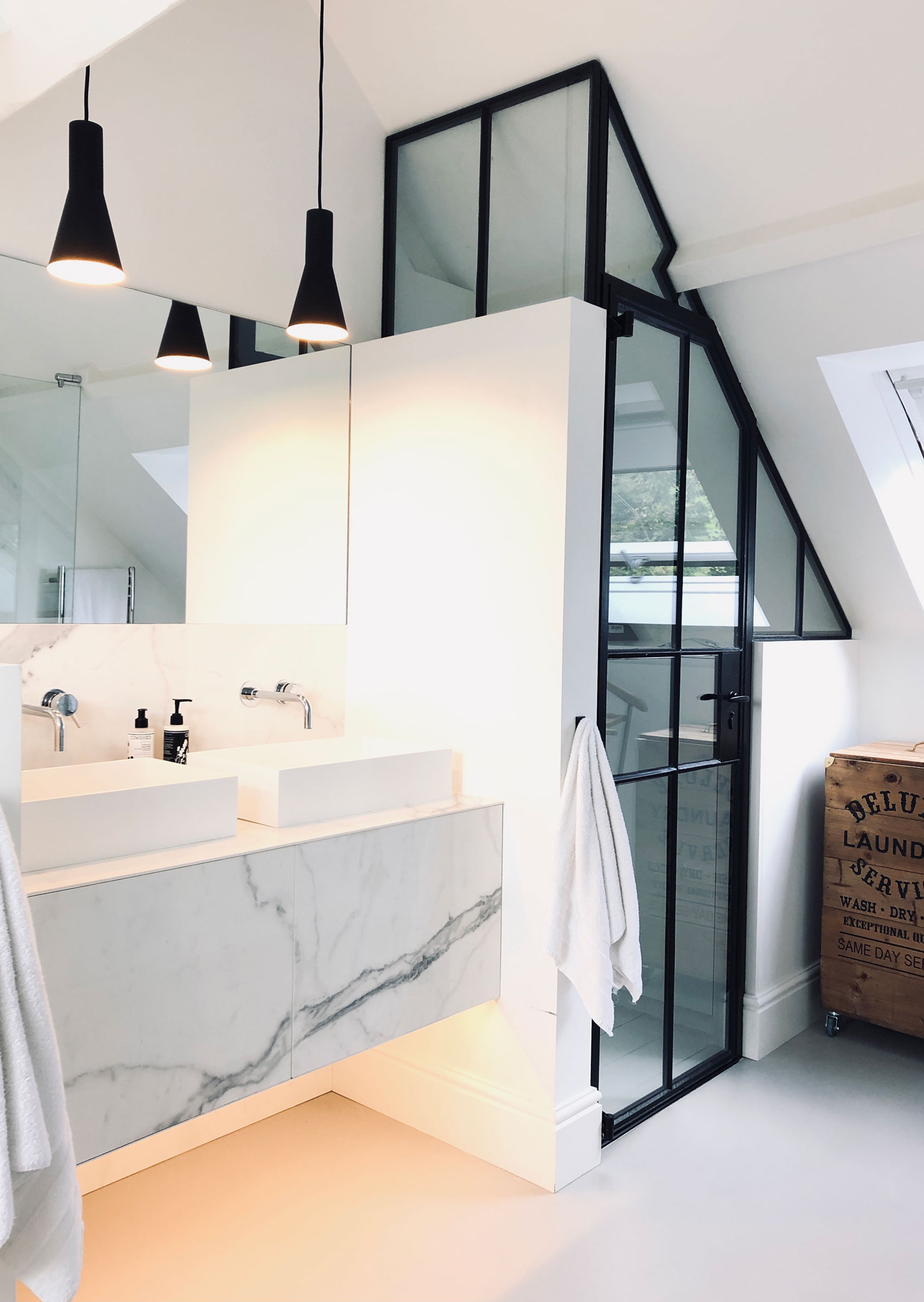
What draws most renovators to old properties is they fact that they are not square boxes with regular features — uneven surfaces, strangle little nooks and crannies and history-laden features are all part of their appeal.
When it comes to locating a bathroom suitable for modern life within a room that is in no way standard in its shape, a creative approach will be required. In this renovated stone cottage, the bathroom features a vaulted ceiling and in order to make the most of this, the shower enclosure extends right up into the apex. The monochrome decor scheme ensures all eyes are on the shape and form of the room.
10. Unite the old with the new
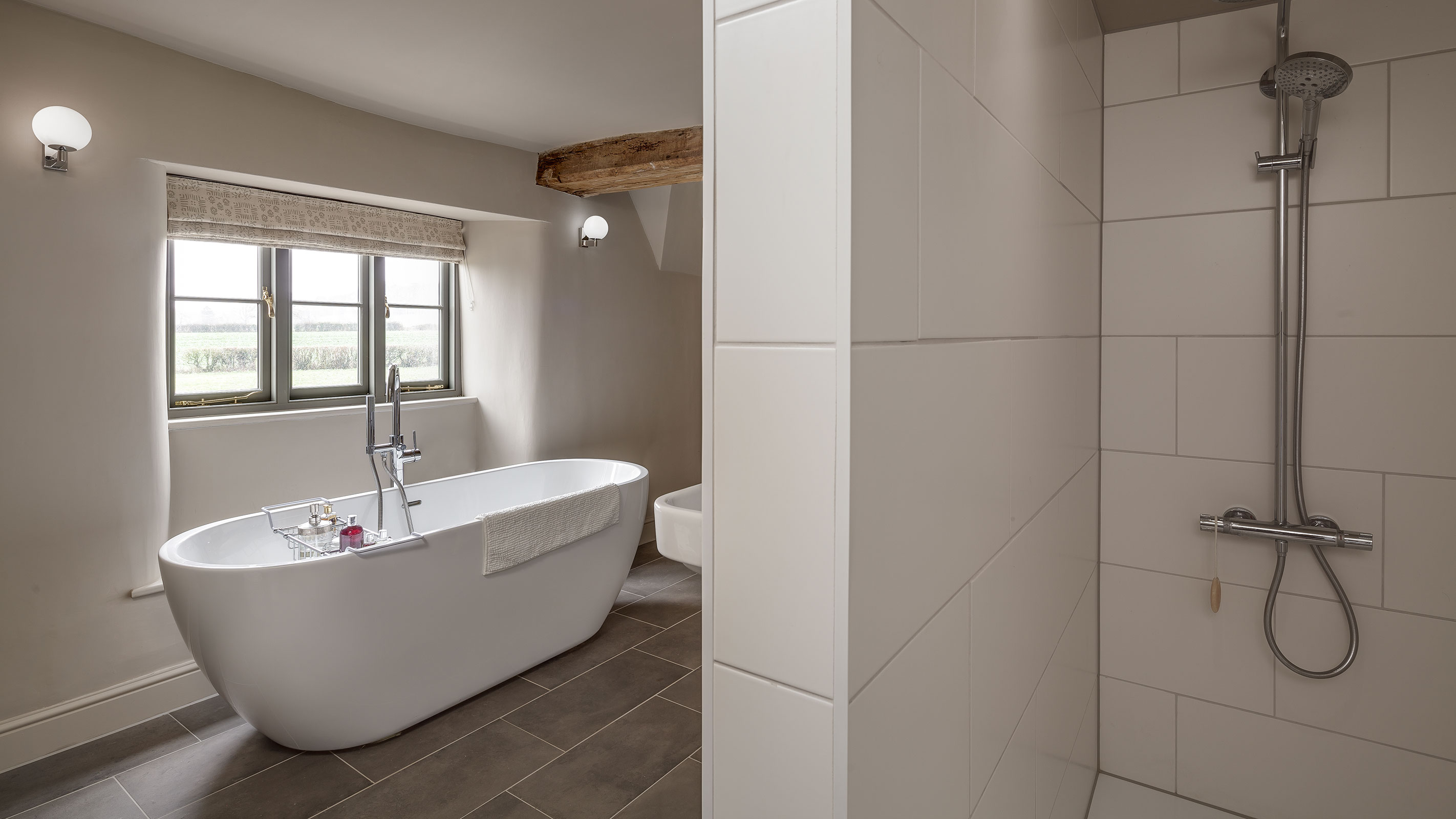
While it is important to respect the original form and authentic charm of a building for a renovation project to be a success, it is almost equally as important not to feel as though you are living in a museum at the end of it.
There are plenty of ways that the old bones of a building can sit happily alongside modern bathroom ideas.
Here, an old bedroom in this Georgian farmhouse has been converted into an en suite for the master bedroom. The restored beams really shine and the beautiful softly curved window reveals are mirrored in the choice of bath, with its lack of straight edges.
11. Take advantage of deep window cills
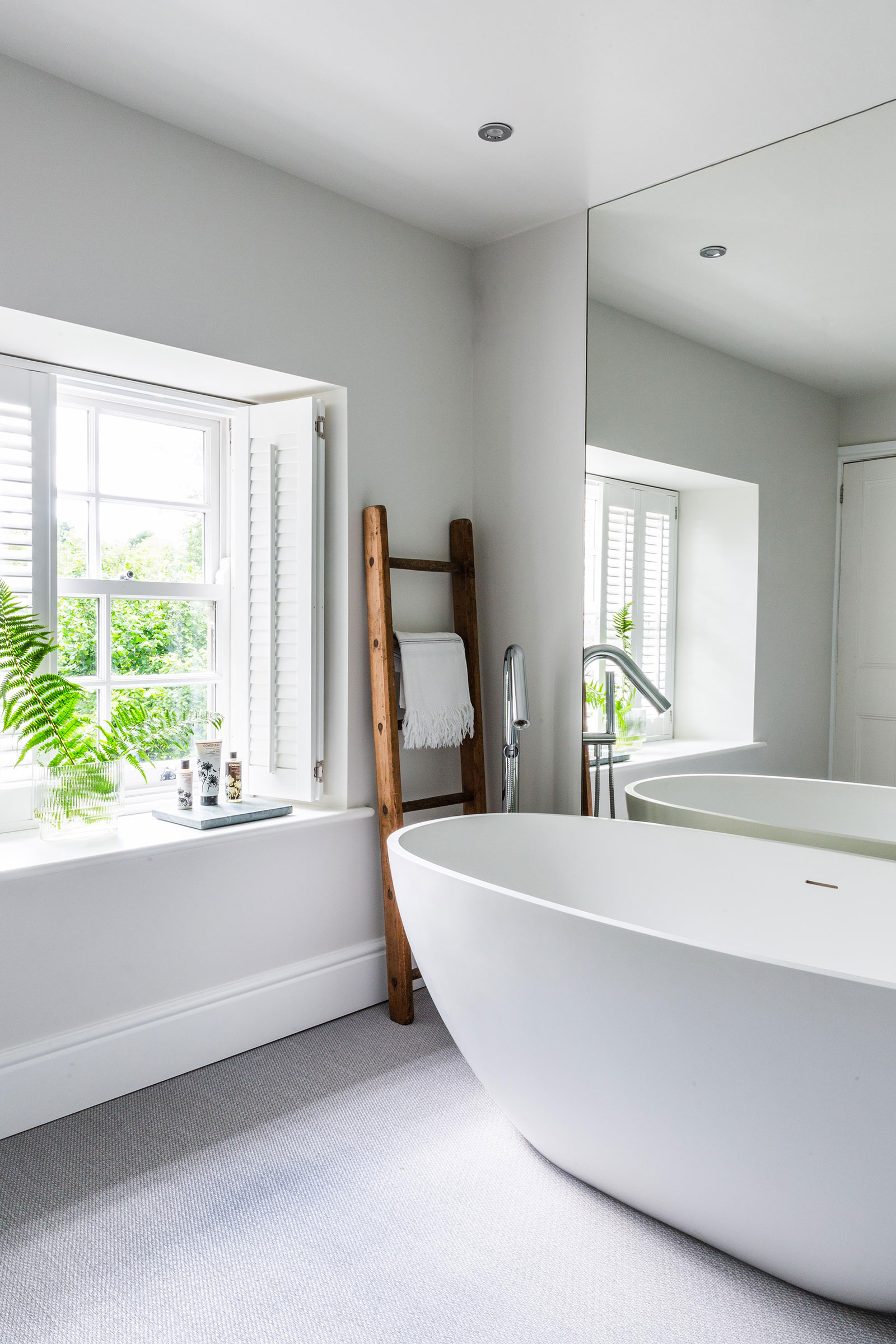
After bathroom storage ideas? They could well lie within the original features of your bathroom. Perhaps a vaulted ceiling could be fitted with a mezzanine level or maybe a bulkhead could form the base for shelving that reaches up to the ceiling?
Here, the extra deep window cill provides the perfect spot for bathroom toiletries, while practical yet beautiful wooden shutters ensure privacy.
12. Try to squeeze in a shower room
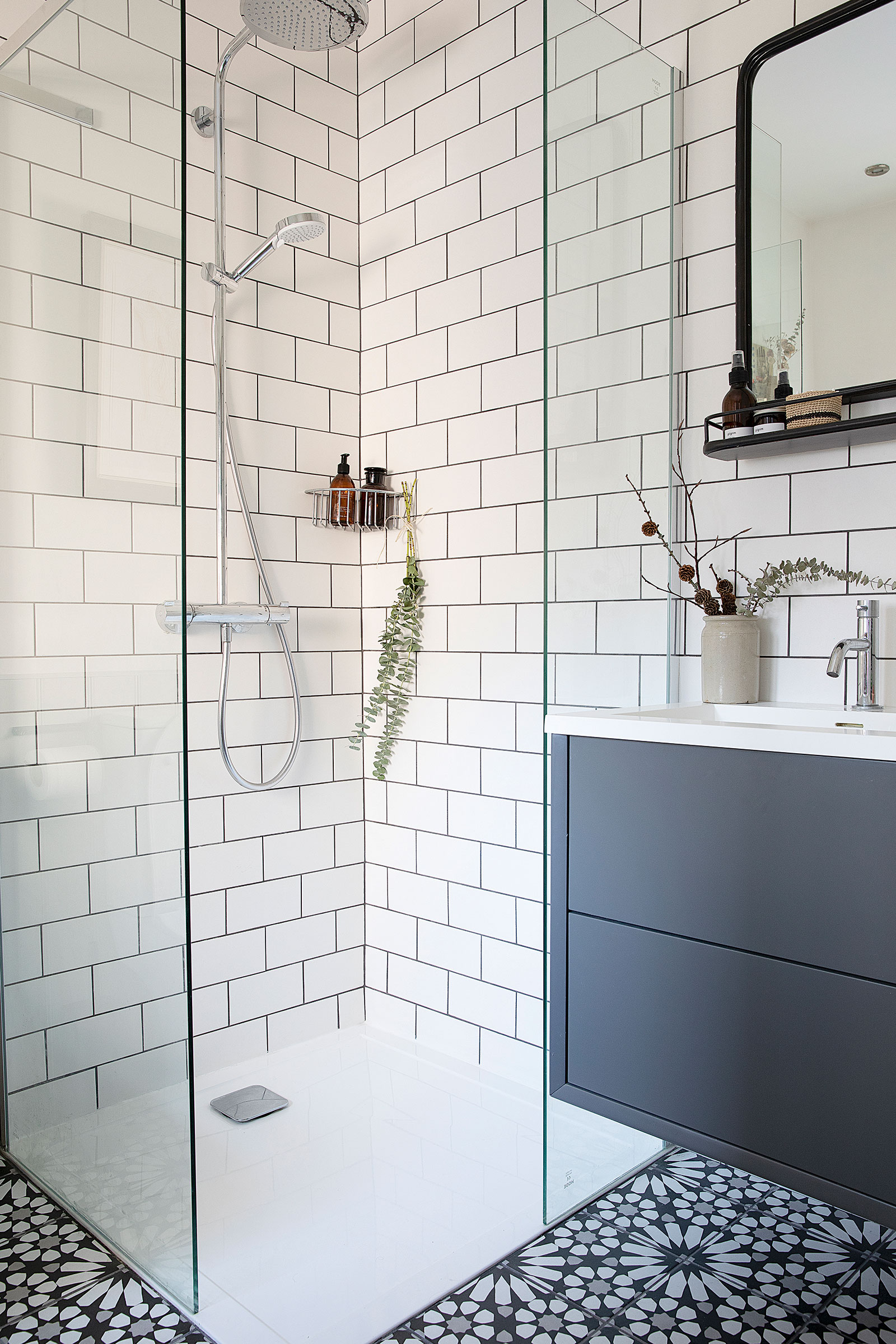
Many older properties in need of renovation have dated ground floor bathrooms that modern-day homeowners are keen to move upstairs. While this is undoubtedly a good idea and one that makes life far easier, you might like to think twice before getting rid of the space entirely — some downstairs bathroom ideas can work really well.
A ground floor shower room can often come in handy, whether it is used as an extra bathroom on busy mornings or an occasional space used by guests being put up in a home office-cum-spare room.
While everything has been kept in the same position in this renovated bathroom, the shower has been made bigger.
13. Create a fresh, classic look with panelling
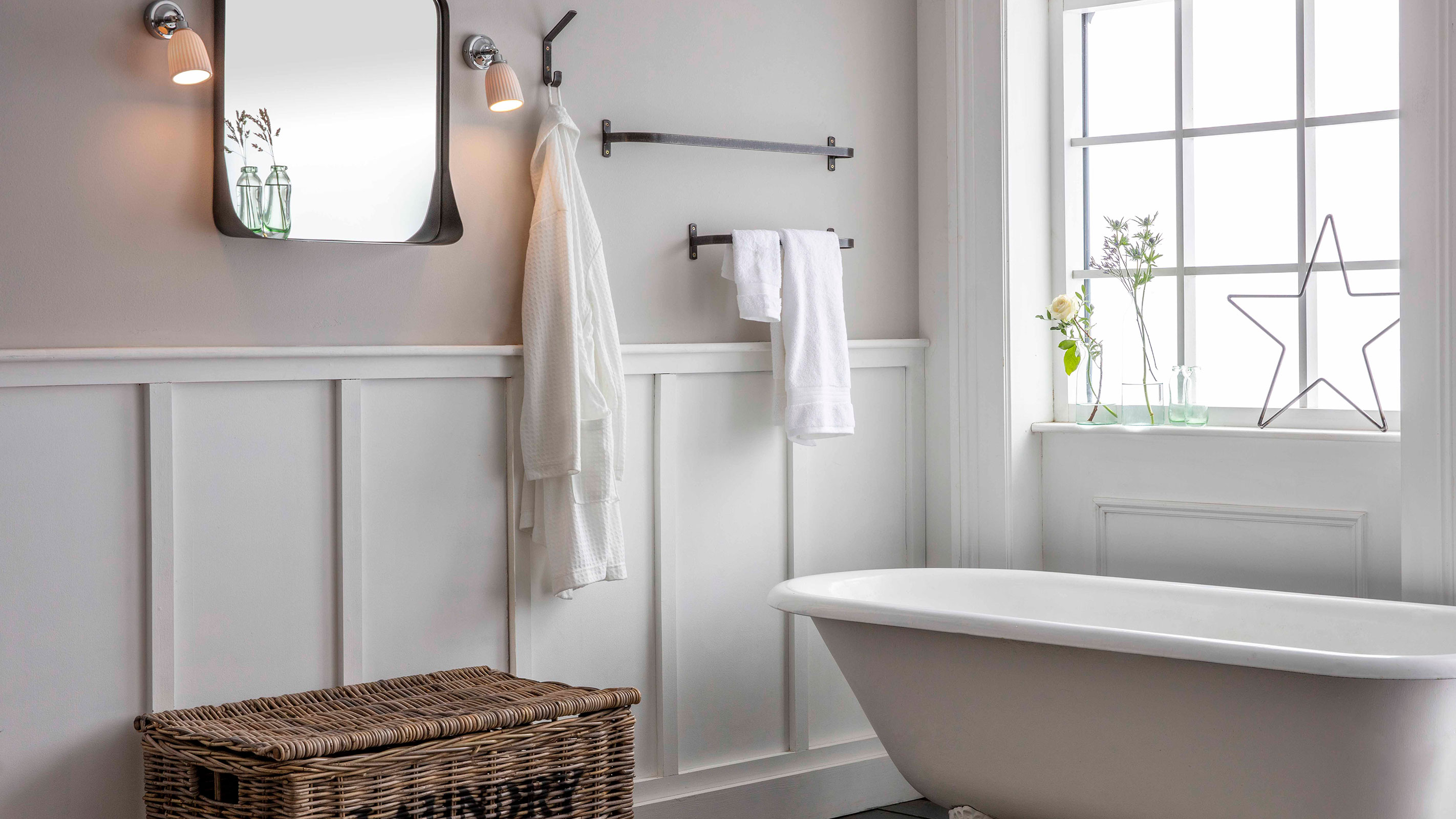
Timber wall panelling looks so beautiful in bathrooms, particularly those with period features elsewhere and is a quick and often cost-effective way of finishing off bathroom walls, easily achievable on a DIY basis.
In the case of bathroom wall panelling ideas, painted MDF panelling is a cheap and convenient option and many can just be stuck onto an existing wall with adhesive.
Here, the simple panelling works perfectly alongside the original sash window and classic rolltop bath.
14. Don't feel you have to play it safe
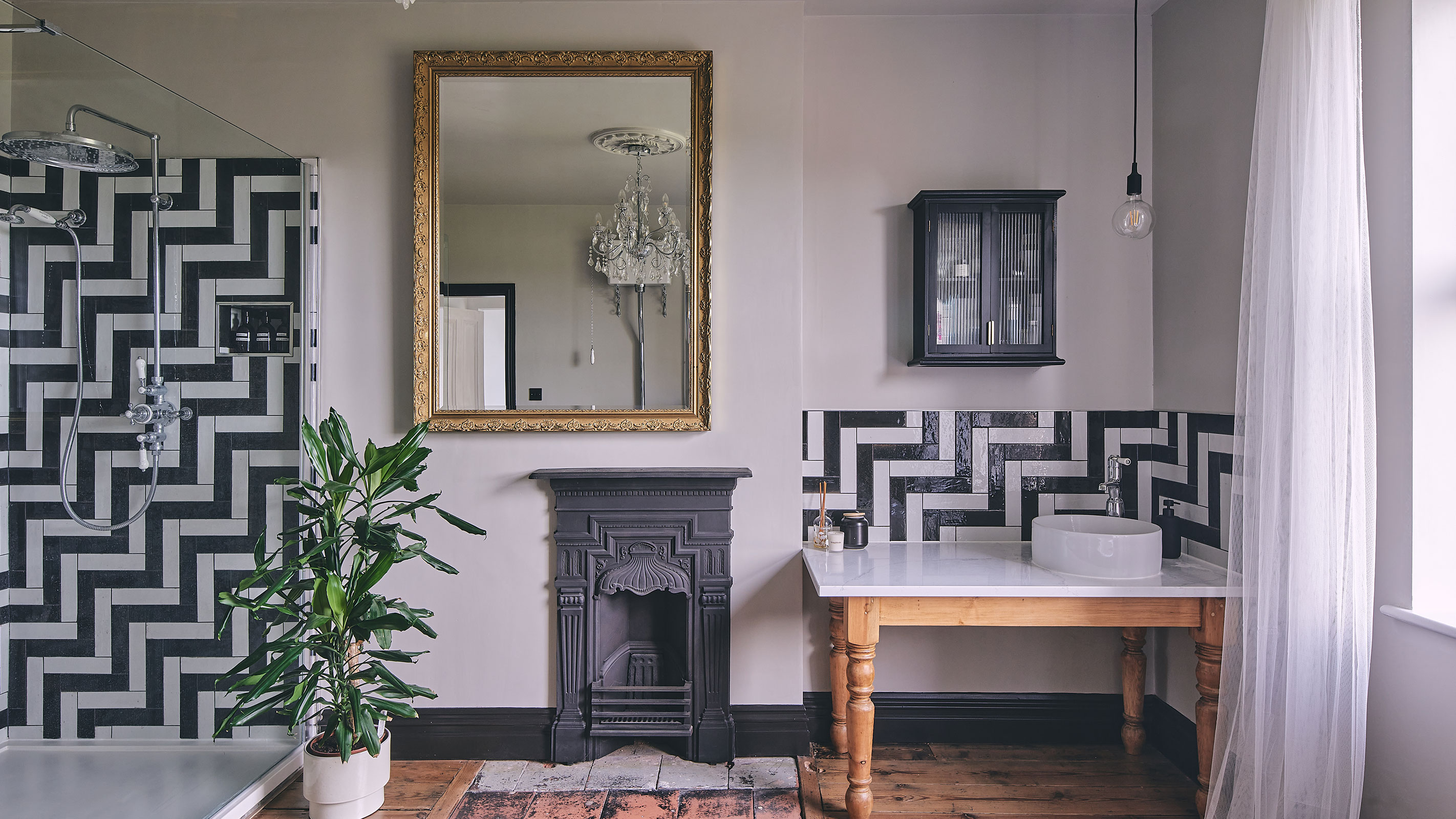
Just because you are dealing with a property that was built many years ago, it doesn't mean you have to select a bathroom suite or fittings that look like they are of that era. In fact, some of the most striking schemes are a result of combining original features with bold patterns and contemporary lines.
This Victorian farmhouse came complete with a plethora of original features, including gorgeous fireplaces, timber floors and soaring ceilings. The owner was keen to create a relaxing sanctuary feel in the bathroom and has combined these features with monochrome tiles laid in a herringbone pattern.
15. Zone a small bathroom with tiles
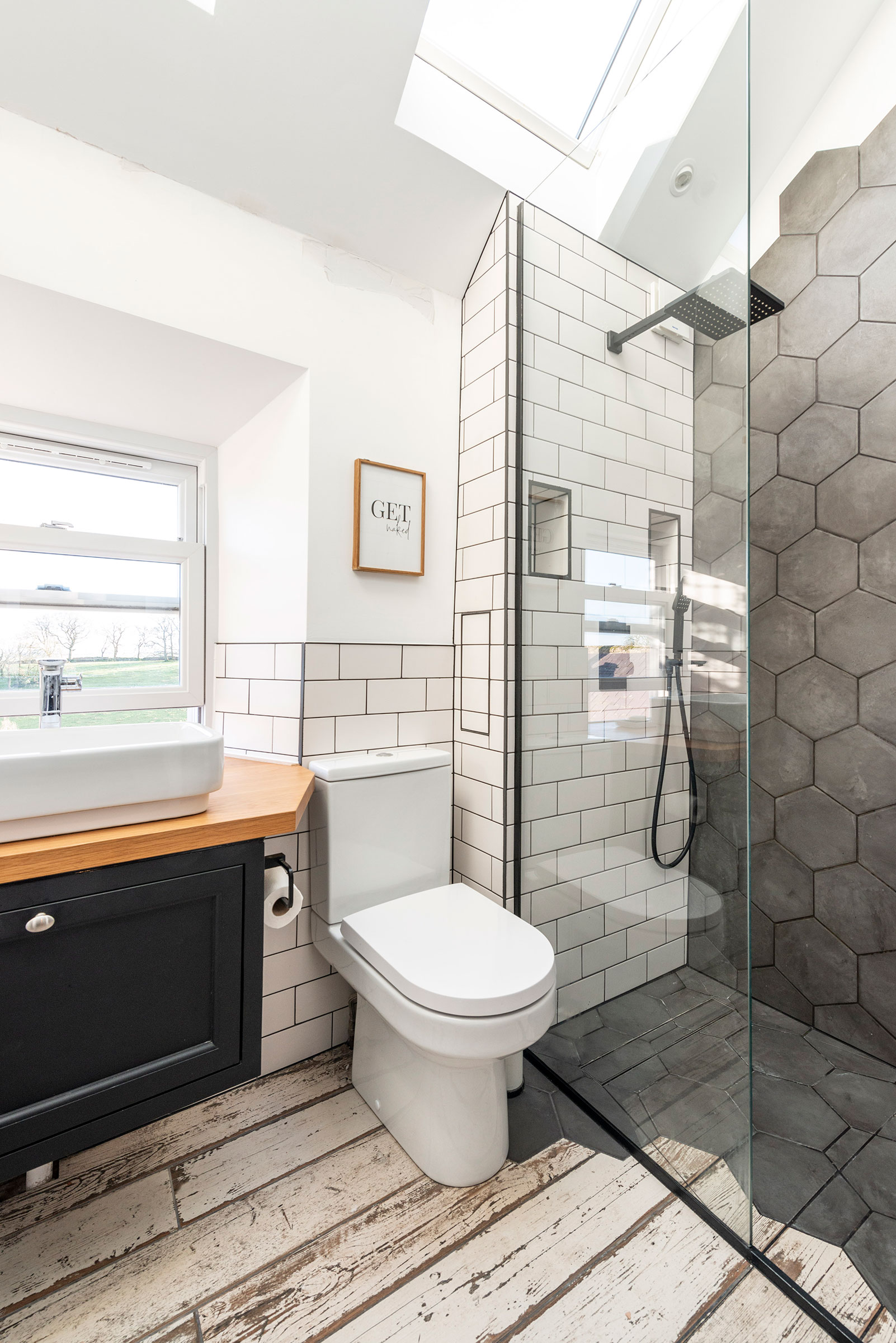
Bathrooms were not always given as much priority by our ancestors as they are these days, meaning they are either non-existent, tagged on to the outside of the building or tiny, dark spaces.
If it is small bathroom ideas that you are after, then you would not be alone. Thankfully, there is plenty you can do to make a bijou bathroom seem bigger and work better.
As part of the renovation of this small 18th-century cottage, the compact bathroom has been split into zones by the owners using different tiles for the showering area and around the sink and toilet.
Get the Homebuilding & Renovating Newsletter
Bring your dream home to life with expert advice, how to guides and design inspiration. Sign up for our newsletter and get two free tickets to a Homebuilding & Renovating Show near you.
Natasha was Homebuilding & Renovating’s Associate Content Editor and was a member of the Homebuilding team for over two decades. In her role on Homebuilding & Renovating she imparted her knowledge on a wide range of renovation topics, from window condensation to renovating bathrooms, to removing walls and adding an extension. She continues to write for Homebuilding on these topics, and more. An experienced journalist and renovation expert, she also writes for a number of other homes titles, including Homes & Gardens and Ideal Homes. Over the years Natasha has renovated and carried out a side extension to a Victorian terrace. She is currently living in the rural Edwardian cottage she renovated and extended on a largely DIY basis, living on site for the duration of the project.

